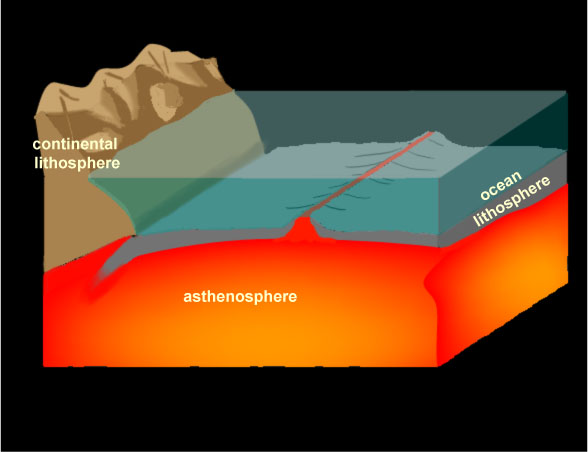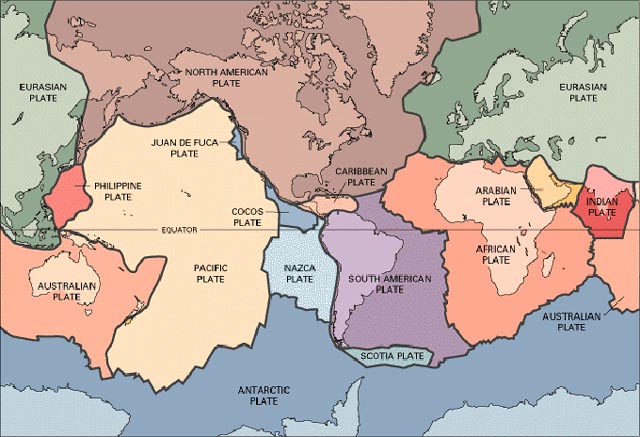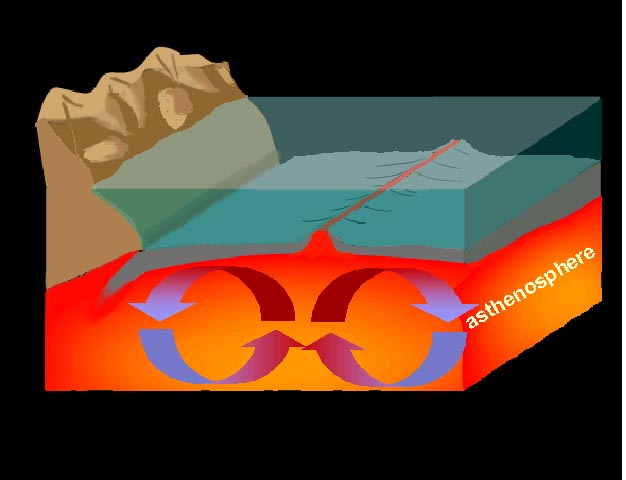
Principles of Plate Tectonics (Part 1)
Several basic principles underlie the theory of plate tectonics. Key concepts include: the lithosphere and the asthenosphere; "plates"; convection; the observation that the most active geology takes place on plate boundaries; and the Wilson Cycle, a concept that describes lifecycles of oceans and continents.
Lithosphere and Asthenosphere
• The earth’s outer shell (crust and upper mantle) consists of cool, brittle rock called the lithosphere.

The ocean and continental lithosphere and the asthenosphere (Diagram by Phyllis Newbill)
Seafloors make up the denser, thinner part of the lithosphere. Continental crust makes up the less dense, thicker part. The plastic layer beneath is called the asthenosphere.
The Plates
• The lithosphere is broken up into separate plates, which include continents and ocean basins.

World map showing the tectonic plates (Diagram courtesy of the United States Geological Survey)
This map shows the locations of the major tectonic plates on the earth’s surface. Note that larger plates include both ocean basins and continents. Plates are made of lithosphere, the earth’s cool, brittle outer rocky shell.
Convection
• Plates move by convection currents flowing in the warm, plastic asthenosphere zone beneath the plates.

Convection (Diagram by Phyllis Newbill)
Convection currents are powered by the heat deep within the earth. As material heats up, it becomes less dense and rises near mid-ocean ridges. As the heated material moves farther from the heat source, it cools, becomes more dense, and begins to sink. This cycle of heating and cooling is called a convection current. Convection currents can occur in the solid earth as well as in water and air. For example, convection currents in the atmosphere are what power weather systems.